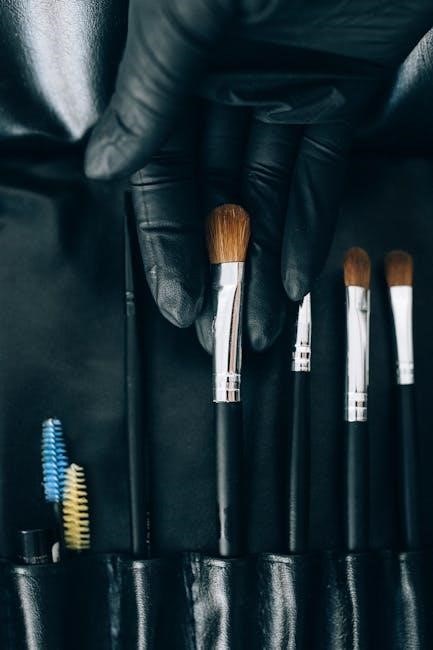Makeup brushes are essential tools for enhancing beauty routines‚ offering precision and versatility. They come in various types‚ each designed for specific applications‚ ensuring flawless makeup coverage and blending.
1.1 Importance of Makeup Brushes in Beauty Routines
Makeup brushes play a pivotal role in achieving professional-grade results‚ offering precision‚ control‚ and even product distribution. They are indispensable for blending‚ contouring‚ and creating seamless finishes. By using the right brush‚ individuals can enhance their natural features‚ ensuring makeup looks polished and well-applied. Brushes also prevent over-application and waste‚ making them a cost-effective investment. Additionally‚ they maintain hygiene standards by serving as a barrier between the skin and makeup products. For both beginners and professionals‚ makeup brushes are fundamental tools that elevate beauty routines‚ enabling the creation of diverse looks with ease and confidence.
- Enhance precision and control during application.
- Prevent product waste and over-application.
- Ensure a seamless‚ professional finish.
- Support hygiene by minimizing direct product contact.
1.2 Brief History of Makeup Brushes
The history of makeup brushes dates back to ancient civilizations‚ where natural fibers and animal hair were first used for cosmetic applications. In Egypt‚ around 4000 BCE‚ crude brushes made from twigs and hair were used for applying malachite eye makeup. Similarly‚ in China‚ brushes crafted from rabbit‚ goat‚ or horse hair were essential for calligraphy and later adapted for makeup. The Middle Ages saw minimal use of brushes‚ but the 19th and 20th centuries revived their popularity with the rise of cosmetics. Synthetic fibers emerged in the mid-20th century‚ offering better hygiene and versatility. Today‚ makeup brushes are a cornerstone of beauty routines‚ blending tradition with modern innovation to enhance artistic expression and self-care.
Types of Makeup Brushes
Makeup brushes come in various shapes and sizes‚ each designed for specific applications. Foundation‚ powder‚ blush‚ concealer‚ eyeshadow‚ eyeliner‚ and lip brushes are the most common types‚ ensuring precise results.
2.1 Foundation Brushes
Foundation brushes are essential for achieving a smooth‚ even base. They typically feature flat or slightly angled bristles‚ allowing for precise coverage and blending. These brushes are designed to apply liquid‚ cream‚ or powder foundation evenly across the face‚ ensuring a natural finish. For best results‚ start in the center of the face and blend outward toward the hairline and jawline. Synthetic bristles are often recommended for foundation as they hold less product and prevent cakeiness. Angled foundation brushes are ideal for contouring and reaching tricky areas like the sides of the nose. Investing in a high-quality foundation brush can make a significant difference in the overall appearance of your makeup‚ providing a flawless base for the rest of your look.
2.2 Powder Brushes
Powder brushes are large‚ fluffy tools designed for applying loose or pressed powder to set makeup and reduce shine. Their soft‚ rounded bristles ensure light‚ even coverage. These brushes are ideal for sweeping powder across the T-zone or entire face‚ blending seamlessly. They are often used to dust mineral powder for a natural finish. Powder brushes come in various sizes‚ with smaller ones suitable for precise application and larger ones for all-over use. Natural bristles are typically preferred for mineral powders‚ while synthetic bristles work well with pressed powders. To use‚ gently sweep the brush across the face in soft‚ even strokes‚ focusing on areas prone to oiliness. This ensures a smooth‚ matte complexion that lasts throughout the day.
2.3 Blush Brushes
Blush brushes are medium-sized tools with soft‚ rounded or angled tips‚ designed for applying blush to the apples of the cheeks. Their bristles are typically made of natural or synthetic fibers‚ offering a smooth‚ even application. These brushes are ideal for creating a natural-looking flush by sweeping the bristles across the cheekbones. For optimal results‚ use light pressure to blend the color upward and outward toward the hairline. This ensures a soft‚ seamless finish without harsh lines. Blush brushes are versatile‚ working well with both powder and cream formulas. Regular cleaning is essential to maintain their quality and prevent bacterial buildup. Proper care extends the life of the brush and ensures consistent performance in achieving a radiant‚ healthy glow.
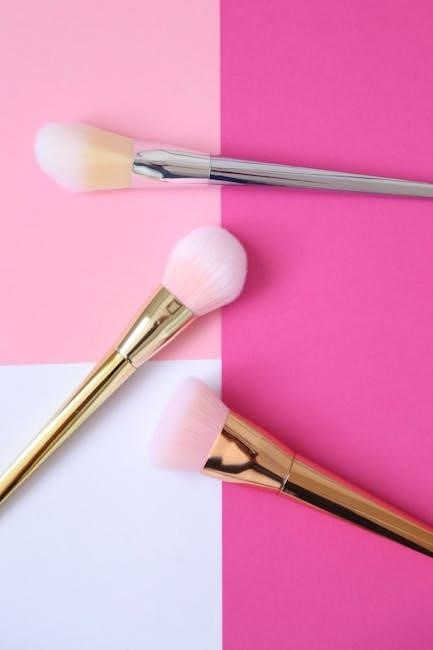
2.4 Concealer Brushes
Concealer brushes are small‚ precise tools designed to target specific areas requiring coverage‚ such as under the eyes‚ blemishes‚ or scars. Their compact‚ tapered or flat heads allow for controlled application‚ ensuring precise blending. Often made with synthetic bristles‚ these brushes work well with cream or liquid concealers‚ picking up the perfect amount of product for a smooth finish. Use light pressure to dab concealer onto imperfections‚ then blend gently for a seamless look. Concealer brushes are ideal for creating a natural‚ buildable coverage that hides flaws without feeling heavy. Regular cleaning is essential to maintain their effectiveness and prevent product buildup. Proper care ensures these brushes remain a reliable tool for achieving a flawless base.
2.5 Eyeshadow Brushes
Eyeshadow brushes are crucial for achieving precise‚ professional eye makeup looks. They come in various shapes and sizes‚ each designed for specific techniques. Flat eyeshadow brushes are ideal for applying a light layer of shadow across the entire eyelid. Fluffy brushes are perfect for blending colors seamlessly‚ creating a smooth transition between shades. For more detailed work‚ smaller‚ angled brushes are great for applying shadow to the crease or under the brow. Synthetic bristles work well with cream or powder eyeshadows‚ while natural bristles are often preferred for powder formulas. To enhance your look‚ use light pressure to build up color gradually‚ ensuring a flawless finish. Regular cleaning and proper storage will keep these brushes in excellent condition for consistent performance.
2.6 Eyeliner Brushes
Eyeliner brushes are designed to deliver precision and control for creating sharp‚ defined lines. They typically feature fine‚ tapered tips or angled edges‚ allowing for accurate application. These brushes work well with liquid‚ gel‚ or cream eyeliners‚ enabling users to achieve anything from a subtle‚ natural look to a bold‚ dramatic effect. The angled variety is particularly useful for winged liner‚ as it fits snugly into the corner of the eye. When using an eyeliner brush‚ steady strokes and light pressure are key for a smooth‚ even line. Cleaning these brushes regularly is essential to maintain their shape and prevent product buildup‚ ensuring optimal performance with each use. Mastering the technique can elevate your eye makeup game significantly.
2.7 Lip Brushes
Lip brushes are essential for precise lipstick or gloss application‚ ensuring sharp‚ defined lines. Their fine tips or angled edges allow for accurate coverage‚ especially around the cupid’s bow. Made from synthetic fibers‚ these brushes excel with liquid or cream formulas‚ enabling smooth‚ even distribution. To use‚ start at the cupid’s bow and work outward‚ then fill in the rest of the lips. This technique helps achieve a professional finish without feathering or bleeding. Regular cleaning is crucial to maintain hygiene and brush shape‚ ensuring long-lasting performance. Whether for bold colors or subtle shades‚ lip brushes are indispensable for a polished‚ refined look that enhances any makeup routine. They offer control and precision‚ making them a must-have in every makeup kit.
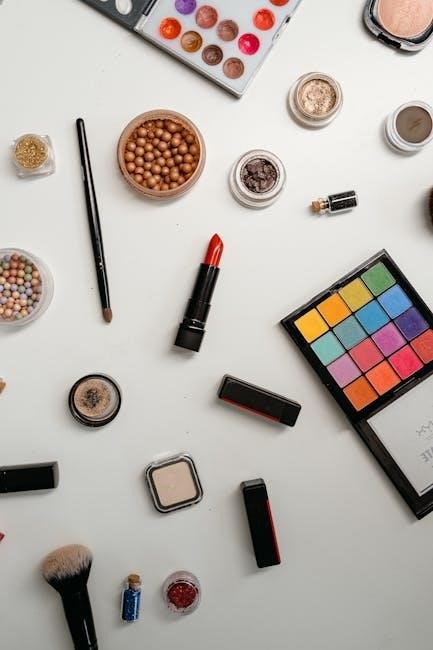
Materials and Bristles
Makeup brushes feature natural or synthetic bristles‚ each suited for specific products. Natural fibers excel with powders‚ while synthetic bristles are ideal for creams and liquids‚ ensuring smooth application and blending. Handles are typically crafted from durable materials like wood‚ metal‚ or plastic‚ designed for comfort and longevity. The choice of materials significantly impacts performance‚ making it essential to select brushes tailored to your makeup needs and preferences. Proper care extends their lifespan‚ maintaining their effectiveness and hygiene. Understanding bristle types and handle materials helps in making informed decisions for optimal makeup results.
3.1 Natural vs. Synthetic Bristles
Natural bristles‚ often derived from animal hair‚ are traditionally used for powder-based products‚ offering excellent pickup and blending. Synthetic bristles‚ made from nylon or polyester‚ are ideal for cream and liquid makeup‚ ensuring smooth‚ streak-free application. Natural fibers tend to be softer and better for delicate skin‚ while synthetic bristles are more durable and easier to clean. Synthetic options are also cruelty-free and hypoallergenic‚ making them a popular choice for sensitive skin. The choice between natural and synthetic bristles depends on personal preference‚ skin type‚ and the specific makeup product being used. Proper care for both types is essential to maintain their quality and performance over time.
3.2 Common Materials Used for Handles
Makeup brush handles are typically crafted from durable‚ ergonomic materials to ensure comfort and longevity. Wood‚ plastic‚ and metal are the most common choices‚ each offering unique benefits. Wooden handles provide a classic‚ natural feel and are often preferred for their balanced weight and grip. Plastic handles are lightweight‚ easy to clean‚ and cost-effective‚ making them ideal for everyday use. Metal handles‚ often found in high-end brushes‚ are sleek‚ durable‚ and resistant to wear. Some luxury brushes feature handles made from bamboo or sustainable materials‚ emphasizing eco-friendliness. The material chosen can influence the overall aesthetics‚ usability‚ and price of the brush‚ catering to various preferences and needs.
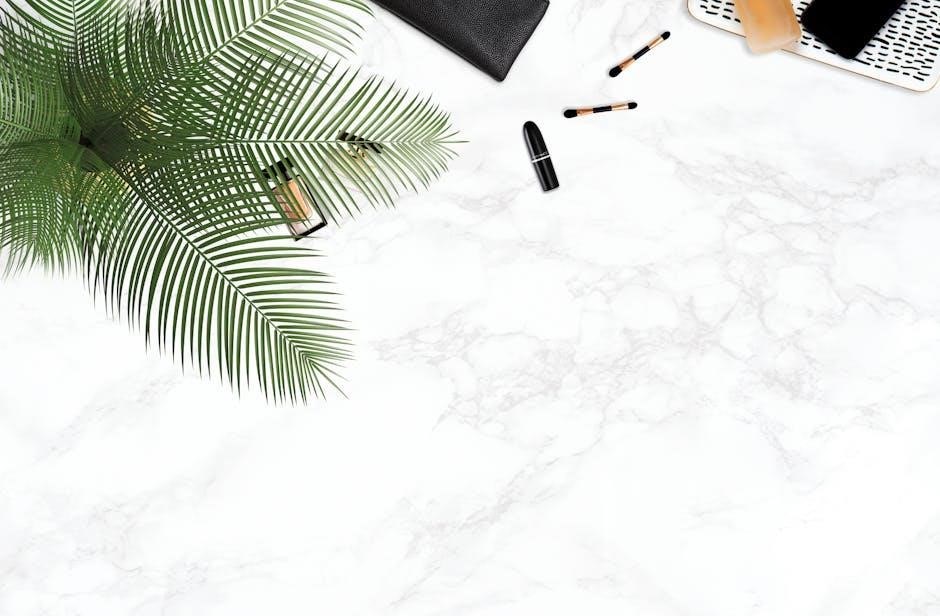
How to Choose the Right Makeup Brush
Selecting the right makeup brush involves considering your skin type‚ desired finish‚ and the specific product you’re applying. Match the brush to your makeup needs for optimal results.
4.1 Understanding Skin Type and Brush Selection
Choosing the right makeup brush starts with understanding your skin type. For sensitive skin‚ opt for soft‚ synthetic bristles to avoid irritation. Oily skin benefits from brushes with natural bristles‚ as they absorb less product‚ preventing clogged pores. Dry or combination skin fares well with gentle‚ blendable brushes that distribute product evenly without pulling. Matching the brush to your skin ensures better makeup application and minimizes potential skin issues. Additionally‚ consider the handle material for comfort and durability‚ and always clean brushes regularly to maintain hygiene and performance. By aligning your brush selection with your skin type‚ you achieve a smoother‚ more flawless makeup application.
4.2 Matching Brushes to Makeup Products
Matching the right brush to your makeup product is crucial for achieving a polished look. Liquid foundation works best with flat‚ synthetic brushes for smooth coverage‚ while powder foundation requires a fluffy‚ natural-bristle brush for even dusting. Concealer is typically applied with small‚ precise brushes to target specific areas. For eyeshadow‚ choose angled or fluffy brushes depending on whether you’re blending or packing color. Lip brushes provide accuracy for lipstick application‚ and angled brushes are ideal for contouring. Always consider the product’s texture—synthetic bristles excel with creams and liquids‚ while natural fibers are better for powders. Proper brush-product pairing ensures optimal results‚ enhancing your makeup routine’s effectiveness and professionalism.
Care and Maintenance
Regular cleaning with mild soap and lukewarm water extends brush life. Reshape bristles after washing and allow to air dry. Store brushes upright or in protective cases to maintain shape and prevent damage.
5.1 Cleaning Makeup Brushes
Cleaning makeup brushes is crucial for maintaining hygiene and extending their lifespan. Use mild soap or a gentle cleanser‚ lukewarm water‚ and a soft cloth to remove dirt and makeup residue. Gently massage the bristles‚ avoiding the ferrule (where bristles meet the handle)‚ to prevent loosening. Rinse thoroughly until water runs clear. Reshape damp bristles and allow brushes to air dry completely to prevent mold and damage. For deep cleaning‚ soak brushes in a mixture of equal parts water and white vinegar for 10 minutes. Clean brushes at least once a week for optimal performance and to prevent bacterial buildup. Regular cleaning ensures smooth application and keeps your makeup looking fresh and flawless.
5.2 Storing Brushes Properly
Proper storage is essential for maintaining the quality and longevity of makeup brushes. Store them in a cool‚ dry place‚ away from direct sunlight to prevent bristle damage. Use protective cases or pouches to keep brushes clean and avoid dust accumulation. Standing brushes upright in a holder or laying them flat in a drawer can help maintain their shape. Avoid exposing brushes to extreme temperatures or humidity‚ as this can warp handles or cause bristle frizz. Regularly organizing your collection in a makeup bag or divider ensures easy access and prevents misplacement. Proper storage preserves the integrity of your brushes‚ ensuring optimal performance and extending their lifespan for flawless makeup applications.
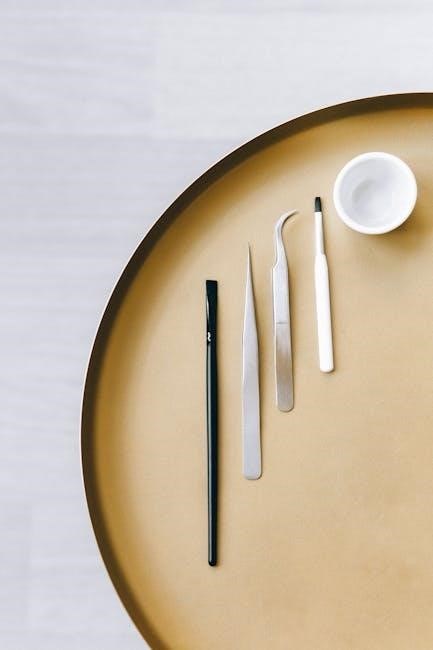
Application Techniques
Mastering essential techniques like stippling and blending enhances makeup application. These methods ensure smooth‚ even coverage and a professional finish every time‚ achieving a flawless base perfectly.
6.1 Mastering Stippling and Blending
Stippling and blending are cornerstone techniques in makeup application. Stippling involves dabbing the brush in gentle motions to build coverage‚ while blending creates seamless transitions between colors. These methods ensure a professional finish. For stippling‚ use a flat or angled brush to target specific areas‚ like under the eyes or blemishes‚ for precise coverage. Blending requires a light hand; use soft‚ sweeping strokes with a fluffy brush to merge colors effortlessly. Start with light layers and gradually build intensity for optimal results. Mastering these techniques enhances the overall makeup look‚ creating a natural‚ polished appearance. Practice is key to achieving flawless stippling and blending every time.
6.2 Achieving a Flawless Base
Achieving a flawless base is the foundation of any great makeup look. Using the right brush ensures smooth‚ even coverage. For foundation‚ opt for a flat or angled brush to cover large areas quickly. Gently sweep the brush across the face‚ starting from the center and blending outward toward the hairline and jawline; Use light strokes to build coverage gradually‚ avoiding harsh lines. For a seamless finish‚ blend well around the edges‚ such as the hairline‚ jawline‚ and under the eyes. A fluffy powder brush can be used to set the base with a light dusting of powder. Proper blending and efficient brushwork are key to creating a natural‚ airbrushed appearance that lasts all day.
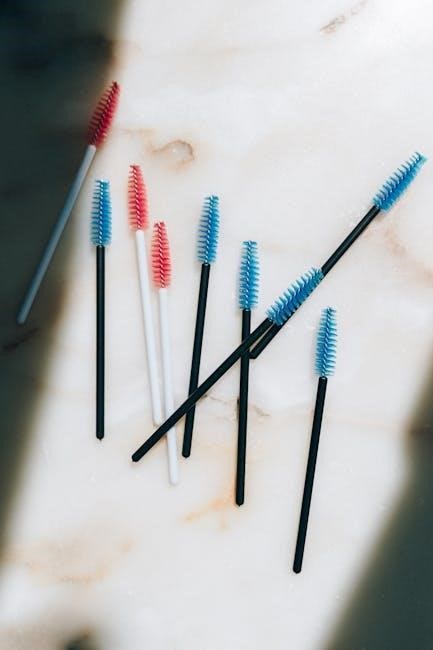
Essential Brushes for Every Makeup Kit
A well-rounded makeup kit requires essential brushes for key tasks. Foundation‚ concealer‚ powder‚ blush‚ eyeshadow‚ eyeliner‚ and lip brushes are must-haves for versatile applications. Invest in quality tools for the best results.
7.1 Must-Have Brushes for Beginners
For those new to makeup‚ starting with the basics is key. A foundation brush ensures smooth base application‚ while a concealer brush helps cover imperfections. A powder brush is essential for setting makeup‚ and a blush brush adds a natural glow. For eyes‚ a flat eyeshadow brush and a crease brush are must-haves for basic eye looks. An eyeliner brush or a pen eyeliner simplifies winged liner. Finally‚ a lip brush allows for precise lipstick application. These tools provide versatility and ease‚ helping beginners master essential techniques without overwhelming them. Investing in quality‚ easy-to-use brushes will build a solid foundation for any makeup routine.
7.2 Advanced Brushes for Professionals
Professional makeup artists rely on specialized brushes for intricate techniques. An angled contour brush is ideal for precise cheekbone definition‚ while a detail concealer brush targets small imperfections. A fluffy crease brush and a pencil brush are essential for advanced eye looks‚ allowing for deep crease work and sharp eyeliner details. A mineral powder brush is perfect for seamless powder application‚ and a cream blush brush ensures a soft‚ natural flush. Professionals also benefit from a double-ended brush for multi-tasking and a flat foundation brush for airbrush-like finishes. These tools offer precision‚ versatility‚ and durability‚ enabling artists to create complex‚ high-quality looks with ease. Advanced brushes are a game-changer for achieving professional-grade results.
